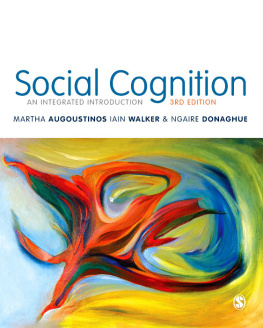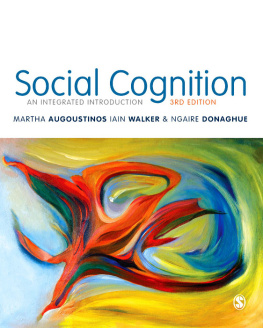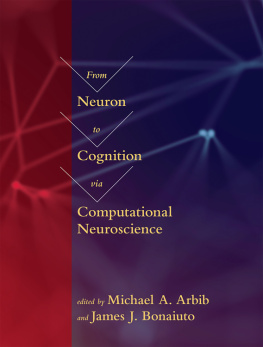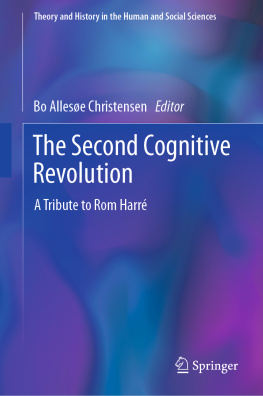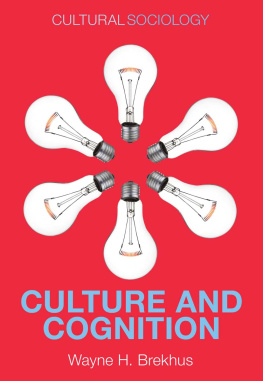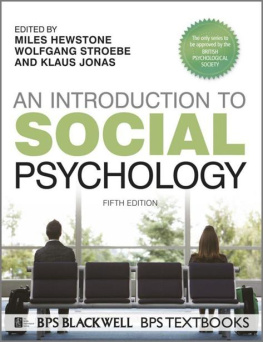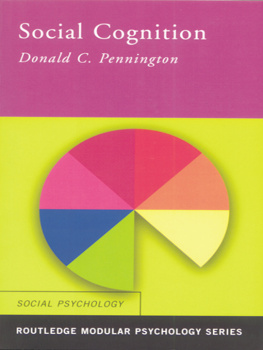
VST.Epub.contentReady(window, document); VST.cfiBase='/4';

VST.Epub.contentReady(window, document); VST.cfiBase='/4';
SAGE has been part of the global academic community since 1965, supporting high quality research and learning that transforms society and our understanding of individuals, groups and cultures. SAGE is the independent, innovative, natural home for authors, editors and societies who share our commitment and passion for the social sciences.
Find out more at: www.sagepublications.com

VST.Epub.contentReady(window, document); VST.cfiBase='/4';

VST.Epub.contentReady(window, document); VST.cfiBase='/4';
Martha Augoustinos, Iain Walker and Ngaire Donaghue 2014
First edition published 1995, reprinted in 1996, 1999, 2000, 2001, 2004, 2005
Second edition published 2006, reprinted in 2009, 2010, 2011, 2012
This third edition published 2014
Apart from any fair dealing for the purposes of research or private study, or criticism or review, as permitted under the Copyright, Designs and Patents Act, 1988, this publication may be reproduced, stored or transmitted in any form, or by any means, only with the prior permission in writing of the publishers, or in the case of reprographic reproduction, in accordance with the terms of licences issued by the Copyright Licensing Agency. Enquiries concerning reproduction outside those terms should be sent to the publishers.
Library of Congress Control Number: 2013940261
British Library Cataloguing in Publication data
A catalogue record for this book is available fromthe British Library
ISBN 978-1-4462-1051-2
ISBN 978-1-4462-1052-9 (pbk)

SAGE Publications Ltd
1 Olivers Yard
55 City Road
London EC1Y 1SP
SAGE Publications Inc.
2455 Teller Road
Thousand Oaks, California 91320
SAGE Publications India Pvt Ltd
B 1/I 1 Mohan Cooperative Industrial Area
Mathura Road
New Delhi 110 044
SAGE Publications Asia-Pacific Pte Ltd
3 Church Street
#10-04 Samsung Hub
Singapore 049483
Editor: Michael Carmichael
Editorial assistant: Keri Dickens
Production editor: Imogen Roome
Copyeditor: Jill Birch
Proofreader: Leigh Timmins
Indexer: Adam Pozner
Marketing manager: Alison Borg
Cover design: Wendy Scott
Typeset by: C&M Digitals (P) Ltd, Chennai, India
Printed and bound in Great Britain by Ashford Colour Press Ltd
VST.Epub.contentReady(window, document); VST.cfiBase='/4';
List of Figures
VST.Epub.contentReady(window, document); VST.cfiBase='/4';
List of Tables
VST.Epub.contentReady(window, document); VST.cfiBase='/4';
List of Textboxes
VST.Epub.contentReady(window, document); VST.cfiBase='/4';
About the Authors
Martha Augoustinos is Professor of Psychology at the University of Adelaide and Co-Director of the Fay Gale Centre for Research on Gender.
Iain Walker is a Senior Research Scientist with Australias Commonwealth Scientific and Industrial Research Organization (CSIRO), where he leads the Social & Behavioural Sciences Group. He is an Adjunct Professor of Psychology at the University of Western Australia, and three other Australian universities.
Ngaire Donaghue is an Associate Professor of Social Psychology at Murdoch University in Western Australia.
VST.Epub.contentReady(window, document); VST.cfiBase='/4';
Preface
Social psychology is a fascinating, enticing, frustrating field of intellectual endeavour. It has ensnared the three of us for our whole working lives. Our aim in writing the first edition of this book was to tackle some of the main sources of our intellectual frustration with social psychology, without ruining the fascination. The second edition of the book was similarly to tackle those same issues, but also to provide a fuller, more adequate, more convincing attempt at developing an integrative social psychology. This third edition offers an updated version of that integration.
We thank the editorial and production team at SAGE , especially Michael Carmichael and Keri Dickens, who have been patient and badgering, encouraging and demanding, in the right proportions. Peta Callaghan at the University of Adelaide has been wonderful in her work behind the scenes.
As always, we each owe huge thanks to our families: Dave and Dylan; Jane, Alex, Joel, and Patrick; and Larry and James. Thanks guys.
VST.Epub.contentReady(window, document); VST.cfiBase='/4';
Acknowledgements
is from Michael Leunig, Ramming the Shears, 1985, with permission from Penguin Books Australia Ltd.
is from Amodio & Frith, 2006, p. 271, with permission from Nature Publishing Group.
is adapted from Tajfel et al., 1971, p. 157, with permission from John Wiley & Sons Ltd.
Extract in is from Radio 4BC, Brisbane, with permission from Jack Harrison, Radio 4BC, Brisbane.
are from Paul Dickerson, Social Psychology: Traditional and Critical Perspectives, p. 64, with permission from Pearson Education.
News article in is from The West Australian, with permission from The West Australian.
is adapted from Furnham, 1982a, p. 315, with permission from the British Journal of Social Psychology.
John Howard speech in
VST.Epub.contentReady(window, document); VST.cfiBase='/4';
Michael Leunigs cartoon, The Understandascope, captures the essence of something profound and, in this case, paradoxical. We see a sole figure, peering through a telescope-like device at a mass of people interacting below. In the background there is a city of buildings, with a plane flying by. Although the cartoon pre-dates September 11, 2001, it is hard to avoid seeing the plane as though it is flying toward one of the skyscrapers. The people in the foreground are all interacting with one another, presumably arguing, telling jokes, chatting up, deciding whether to go to a lecture or what to have for dinner, and all the other things people do in everyday life. High on the hill, the sole figure peering through the Understandascope observes all this and, aided by the wonderful contraption, understands it all. If only it were so easy.
The aim of social psychology is to understand the social nature of being human. Social cognition is an area of social psychology, with the narrower aim of understanding how humans come to understand the social world and their position in it. In many ways, the social psychologist is the solitary figure in Leunigs cartoon, trying and hoping to understand humanity with the aid of some theoretical and methodological contraptions. Unfortunately, that endeavour and hope are thwarted by the paradox within Leunigs cartoon.
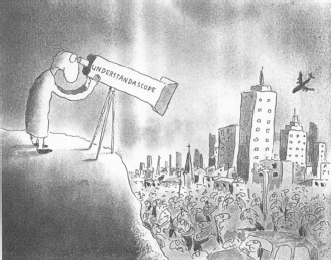
Figure 1.1 The Understandascope by Michael Leunig
The solitary figure is separated from the mass below, set apart as though unafflicted by being human and unaffiliated with anything human. In peering through the Understandascope, the figure fails to recognize that he (and the figure does seem to be drawn as he, and that only highlights the point we are making here) is inseparable from those below, and indeed that any understanding that comes through the Understandascope is not given to him as if divinely, but rather depends on his interpretation of the information provided. His understanding is the joint product of the Understandascope and himself. Furthermore, if the Understandascope genuinely does provide understanding of what it is to be human, it ought to provide that understanding regardless of which group of humans it is focused on, and even perhaps especially when it is focused backward on the viewer.
Next page
